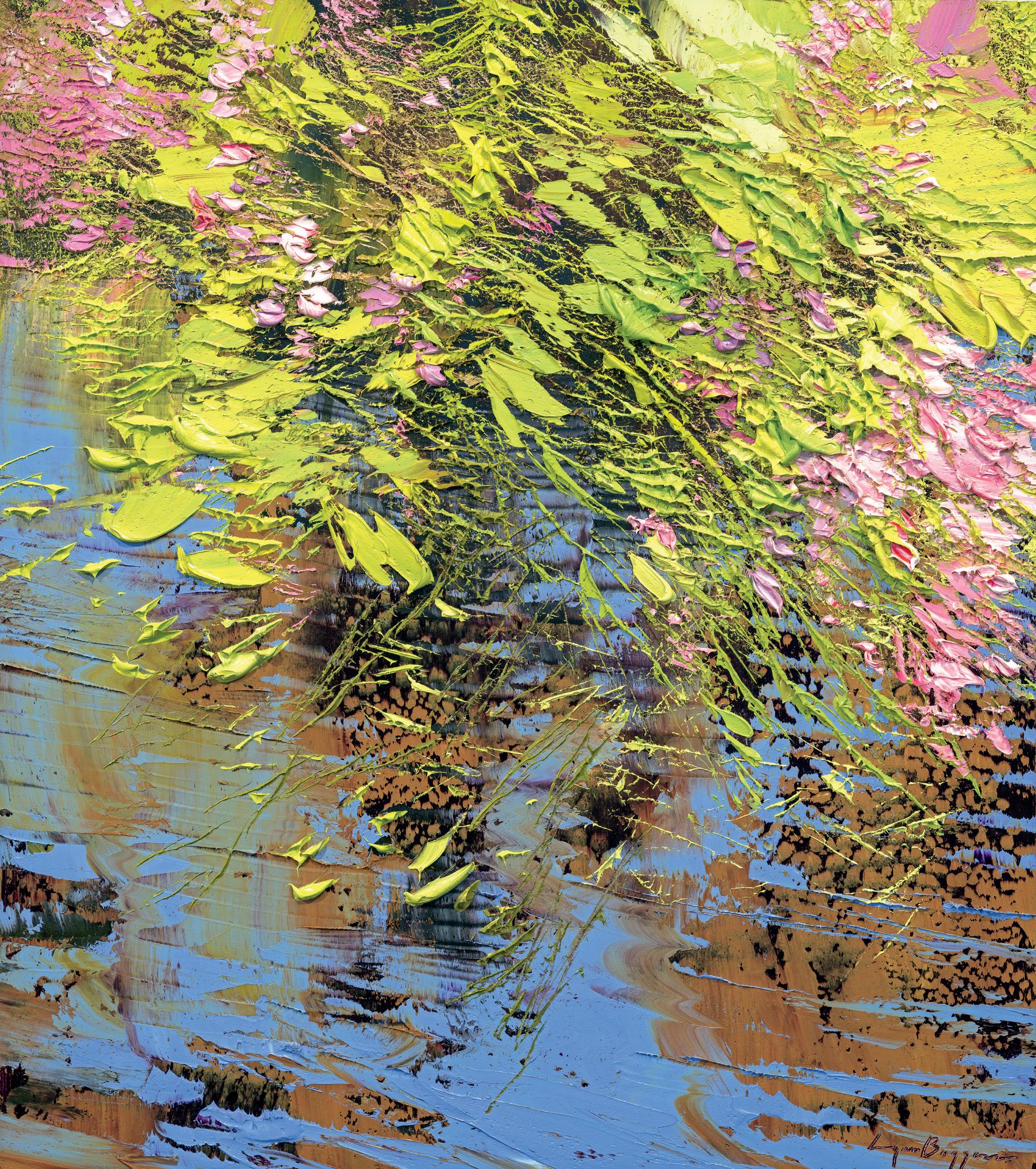
3 minute read
Captivating Creatures
Lynn Boggess, 19 June 2021, oil on canvas, 34” x 30”
The paintings can be appreciated on many levels. To the casual viewer, there is a fascination with the fact that the work appears photographic from fifteen feet away, while from two feet away it is a complex arrangement of large trowel strokes. To those who appreciate the natural world there is a purity in the subjects, which deny all references to human interference. Adventurers enjoy the fact that nearly all of the work is created on location. Art historians appreciate Boggess’s references to Impressionism, 19th-century realism, and 20th-century abstract expressionism.
—Jennifer Hall Boggess

Captivating CreaturesEster Curini

Ester Curini in her Brooklyn, New York studio Photo: Giuseppe Bergami
Ester Curini’s work is compelling not only for its immediate visceral impact; it also reveals a deep-rooted humanitarian consciousness, and is a call to action for the preservation of essential wildlife.
Each of Curini’s subjects is an animal depicted larger than life and isolated on a stark, white background. She does this to give her subject animals a compelling voice without distraction. The subjects of her work are specific creatures that have been victims of humanity: endangered, pushed out of their natural environment, neglected, or abused. She raises awareness for wildlife preservation with her lifelong compassion and commitment, as expressed through her art.
More than any other species, the wolf resonates with Curini and is a repeated subject of her work. The story of the gray wolf is one of the most compelling tales of American wildlife. Once widespread across most of North America, the gray wolf was hunted ruthlessly, and exterminated throughout most of its range.
However, the gray wolf plays a vital role in the health and proper functioning of ecosystems.
Through the Eyes of a Mexican Gray Wolf was inspired by one of the wolves at the Wolf Conservation Center, in South Salem, New York. Curini has spent much time there over the years and has come to know the resident wolves, carefully observing and photographing them. The Mexican gray wolf, a subspecies of the gray wolf commonly referred to as El Lobo, is one of the most endangered North American mammals. The wolf depicted in this painting was a candidate for wild release, and hopefully is now running free in Arizona and New Mexico, where only 187 of its kind remain, according to the U.S. Fish and Wildlife Service.
Ester Curini’s painting I Was Wild, They Named Me OR4 is a tribute to a legendary wolf whose offspring founded many packs now living in Oregon. The legend began one day in 2005–2006, when a young gray wolf headed west from Idaho. He swam across the Snake River to Oregon, which was then outside the gray wolf’s established range. After establishing a territory there, he became Oregon’s most celebrated and controversial canid. Dubbed OR4 by the Oregon Department of Fish and Wildlife, he was the alpha male of the first pack to live in the state in over half a century.
For years, biologist Russ Morgan tracked OR4; he collared him five times, counted his pups, weighed and photographed him, and protected him. Environmentalists rejoiced. Cattle ranchers wanted him dead. Though OR4 spent most of his time hunting elk and other wild game, he did occasionally target livestock, a habit that got him and his pack in trouble.
OR4 became known for his enduring competence as a hunter, father, and survivor—until he was killed by hunters in a helicopter in 2016, along with his mate and two pups. Although taken too soon, he lived to a remarkable old age for a wolf in the wild— just one month short of his eleventh birthday.

Ester Curini, I Was Wild: They Named Me OR4, acrylic on Belgian linen, 72” x 48”
Ester Curini, Through the Eyes of a Mexican Gray Wolf, acrylic on Belgian linen, 60” x 72”









